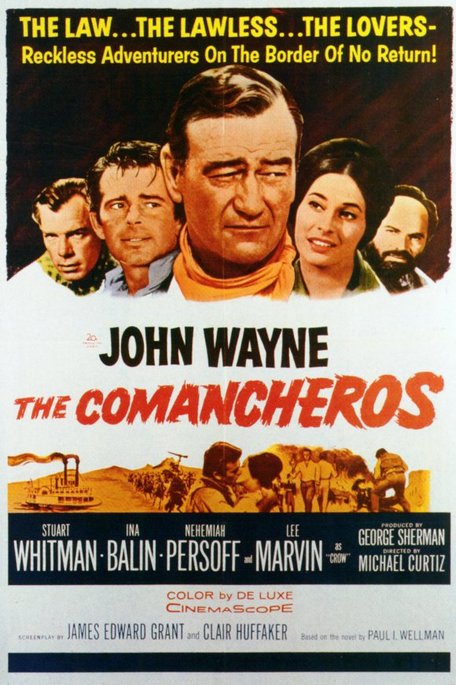Author: Paul I. Wellman
Setting: 1840's Texas
Plot: Paul Regret, New Orleans' gambler, engages in a duel with the only son of influential Judge Beaubein. Regret shoots the young man, but does not kill him. Regardless, he has to flee New Orleans with a price on his head. Going to Texas, he is given a choice by Sam Houston himself, of either being extradited to Louisiana or joining the Texas Rangers. Regret cho0ses to join the Rangers, not because he wants to be a Texas Ranger, but because he preferred that to hanging. He learns the ropes of being a Ranger...witnesses the aftermath of a Comanche raid [and from reading The Captured by Scott Zesch (I never finished it), I knew exactly what the author delicately alluded to]...and with his shooting skills earns respect, if not acceptance among the Rangers.
When Regret is commissioned with Tom Gatling (his rather hostile partner) and Captain Blake Henrion to discover the hideout of the Comancheros, the story really takes off. I won't let on what happens, only that they get captured.
Paul Regret's love interest is woven throughout the book and ends up being important to the story.
********************************************************************
There was a movie made from the book....
Setting: 1840's Texas
Plot: Paul Regret, New Orleans' gambler, engages in a duel with the only son of influential Judge Beaubein. Regret shoots the young man, but does not kill him. Regardless, he has to flee New Orleans with a price on his head. Going to Texas, he is given a choice by Sam Houston himself, of either being extradited to Louisiana or joining the Texas Rangers. Regret cho0ses to join the Rangers, not because he wants to be a Texas Ranger, but because he preferred that to hanging. He learns the ropes of being a Ranger...witnesses the aftermath of a Comanche raid [and from reading The Captured by Scott Zesch (I never finished it), I knew exactly what the author delicately alluded to]...and with his shooting skills earns respect, if not acceptance among the Rangers.
When Regret is commissioned with Tom Gatling (his rather hostile partner) and Captain Blake Henrion to discover the hideout of the Comancheros, the story really takes off. I won't let on what happens, only that they get captured.
Paul Regret's love interest is woven throughout the book and ends up being important to the story.
********************************************************************
There was a movie made from the book....
The Duke is not Paul Regret--rather he's the Tom Gatling character--with a different name. If you ask my opinion, the book is better. The Comancheros, the movie is actually quite different than the book. The opening scene is the same and then one scene when Regret is among the Comancheros is the same. That's about it.
In the movie, Paul Regret meets his love interest on a boat (in the book he's known her for several years). He is arrested on the boat by the Duke (or Jake Cutter). Sam Houston is not in the movie. Anyway, Regret gets hauled around by Cutter--Regret knocks Cutter on the head and runs away. He get's re-caught and ends up being drug into the Comanchero trip (no Capt. Henrion in this version). The end is not nearly as powerful.
That was very uncohearant...but I just wanted to say that the book was the better of the two stories. Of course, being a Duke fan--the Comancheros isn't bad :) (Duke is himself you know...I like the Paul Regret of the book better--he's not quite such a prig.)
Book: 5 star
Movie: 3 star
In the movie, Paul Regret meets his love interest on a boat (in the book he's known her for several years). He is arrested on the boat by the Duke (or Jake Cutter). Sam Houston is not in the movie. Anyway, Regret gets hauled around by Cutter--Regret knocks Cutter on the head and runs away. He get's re-caught and ends up being drug into the Comanchero trip (no Capt. Henrion in this version). The end is not nearly as powerful.
That was very uncohearant...but I just wanted to say that the book was the better of the two stories. Of course, being a Duke fan--the Comancheros isn't bad :) (Duke is himself you know...I like the Paul Regret of the book better--he's not quite such a prig.)
Book: 5 star
Movie: 3 star


